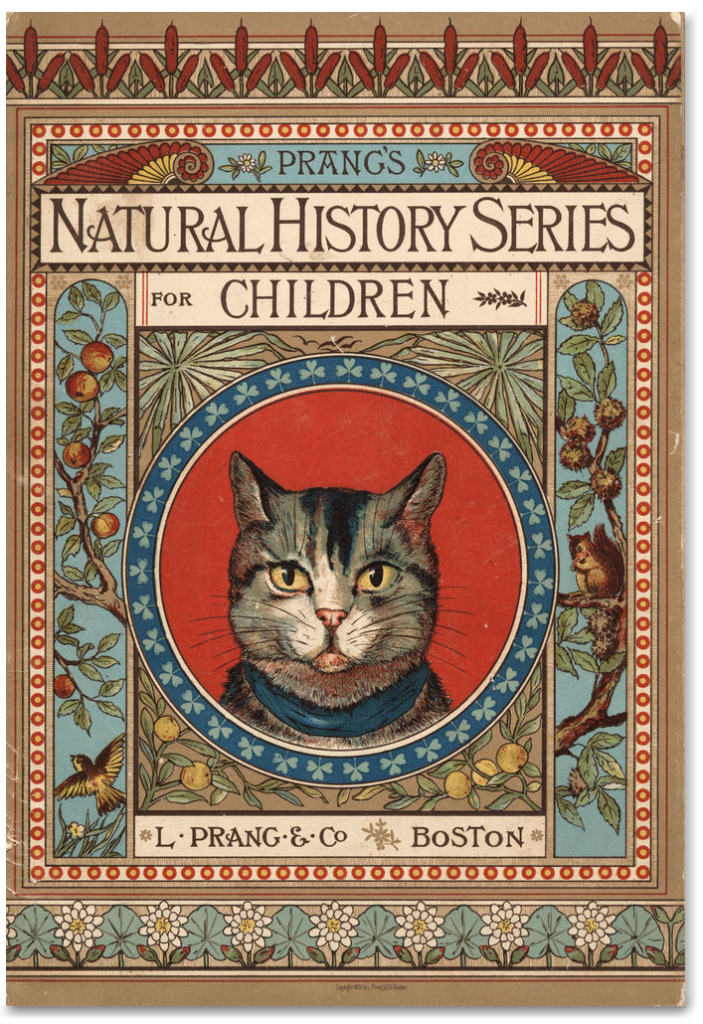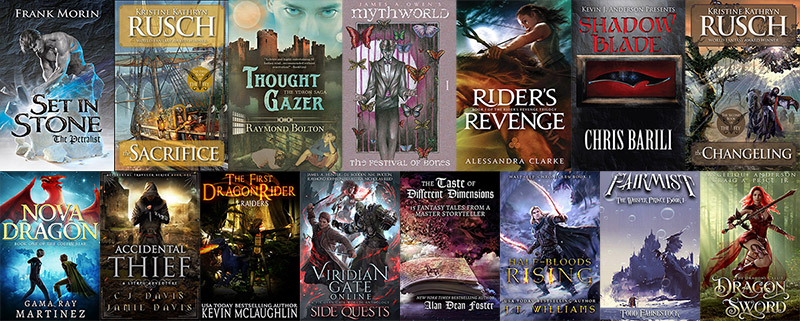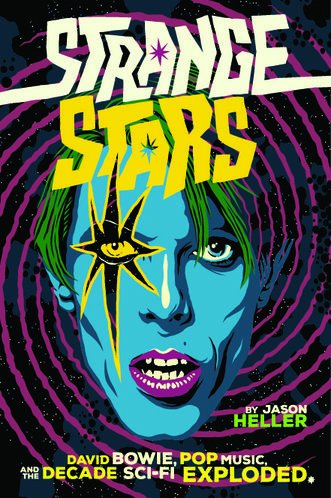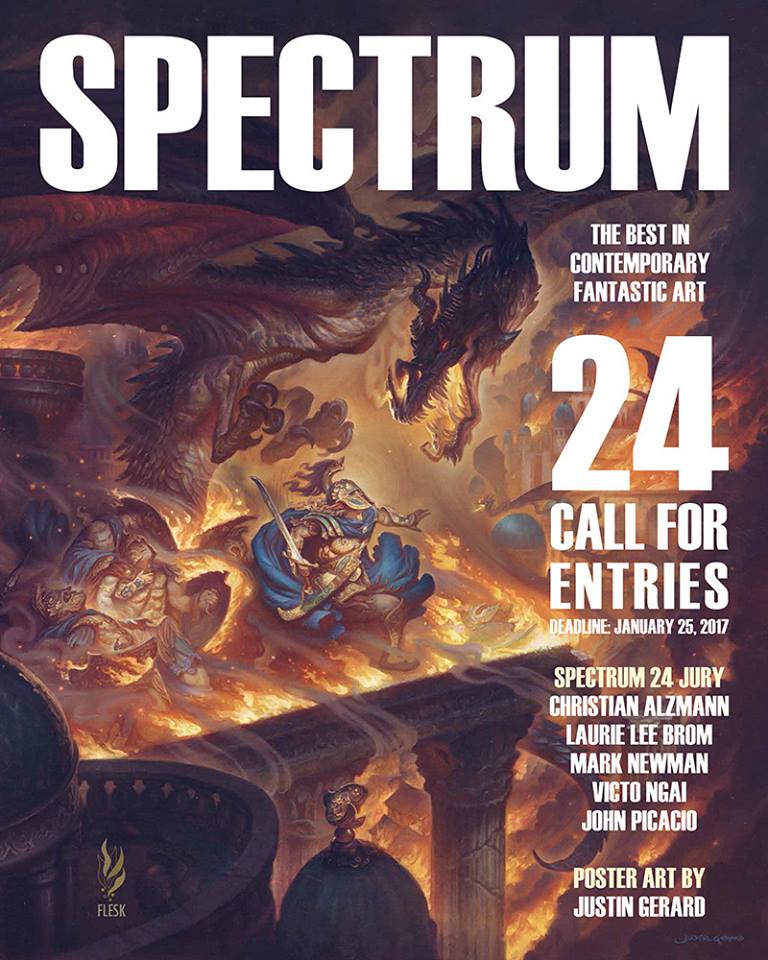(1) MORE REACTIONS TO JASON SANFORD’S REPORT ABOUT BAEN’S BAR AND RELATED ISSUES.
Cat Rambo draws on her decades of experience moderating online forums, including SFWA’s private discussion forum, in “Opinion: On Baen Books, Moderating Discussion Boards, & Political Expression”. Also part of her background –
…In the interest of full disclosure, I’m technically a Baen author. I have a story in a couple of Baen anthologies and another in an upcoming one. I also was the main decider in the choice to give Toni Weisskopf a Kate Wilhelm Solstice award in 2016 in acknowledgment of how much she has shaped the field. I have never been on their discussion boards, as far as I can remember….
She covers a half dozen subtopics before concluding —
…Online harassment is used by a number of folks to silence other people and it includes tactics like SWATting, contacting one’s employer, doxxing, and worse. Jason Sanford is experiencing some of this right now, to the point where he’s had to take his Twitter and Patreon private, but he’s not the first, nor will he be the last. It is shitty and invasive, and it’s something that can constantly ambush you.
Moreover, stochastic terrorism is a thing, and it’s one that some of the “my wishing you were dead wasn’t really a death threat because I didn’t say I’d do it personally” yahoos are hoping for. That hope that someone will be hurt as a result of their rhetoric flickers dimly in the depths of their creepy little souls, even when they claim otherwise, because here in America, it’s a possibility every time they stir up an audience to think of their opponents as NPCs rather than people. And it’s something that is particularly hard on the vulnerable. If you’re a white male experiencing harassment, know that if you were a woman of color, you’d be getting it a hundred times worse, whether you acknowledge that or not.
So… I don’t know what will happen with Baen’s discussion boards. I hope that they’ll do what sometimes happens as a result of these challenges: emerge as something better and more useful, something that creates more community ties than eroding them. Because it’s a time and place when we need more kind, brave words and less hateful, thoughtless rhetoric, and I feel any efforts to establish that is where true heroism lies. Thank you for issuing the challenge, Jason. I hope people rise to meet it.
Sheree Renée Thomas, who is set to co-host the 2021 Hugo ceremony, gives extended commentary about the implications for the Worldcon in a 16-tweet thread. Thread starts here.
Malka Older, the other 2021 Hugo co-host, aired her views in a thread that starts here.
Leona Wisoker does an overview of the Jason Sanford and Eric Flint essays and where they fit into the immediate present day in “Baen’s Bar Fight”.
… The boundaries of free speech and individual liberty in the wild world of genre fiction is, as I’ve said already, not a new battle. However, right here, right now, today, we’re dealing with a new twist on the old situation: the critical flash point of people spreading and believing dangerous lies for years. This started before Trump came into office. Before Obama’s first inauguration. Over the last ten years, the rise of groups like the channers, Gamergate, Reddit, Parler, Fox News, OANN, and QAnon has boosted those lies into explosive territory.
We’re no longer simply talking about malcontents complaining in a chat room. We’re now dealing with a series of connected, systemically based incidents that are driving credulous people into increasingly violent actions, in groups that are steadily expanding in size. We’re talking about bad faith actors — some in government and law enforcement — who are in it for the money and power, who have and will continue to use that misguided passion to their own benefit, and who don’t care who gets hurt along the way. To wave away the bitter speeches and threats of randos in internet forums is to entirely ignore the escalating situation that led to the Capitol insurrection in the first place….
Simon McNeil surveys posts by Jason Sanford and others as a preliminary to his thesis that those who believe there is an overall sff community are mistaken, and that prospects for the 2021 Worldcon have been irreparably damaged. “The vexatiousness of the culture wars in SFF – Baen’s Bar and the fantasy of total community”.
…And here we return to two central questions that have been at the heart of genre fiction’s long-running culture war, just who is this community and what, if anything are its standards?
We have here a situation where the genre fiction “communty” consists of several disparate actual groups of people. These people have mutually exclusive definitions of the ideal present notwithstanding what they may want to see in fiction about the future, the past or other worlds. The attempts of mass conventions like DisCon III to serve these vastly disparate communities means it’s ultimately impossible to serve any.
Now I’m honestly quite shocked that there is going to be an in-person WorldCon this year. Between international travel restrictions and the clear and present danger of mass gatherings, it really feels like a live convention in 2021 is unsafe quite regardless of who the editor guest of honour is. With this said, while I do believe that Sandford turning over this particular rock exposed the peril lying under the surface of science fiction I don’t think de-platforming Weiskopf is going to make the convention any less dangerous for anyone unwilling to tow the American conservative line. Frankly, Toni Weiskopf isn’t the problem, she’s merely a symptom of it. Baen, and its stable of Trumpist malcontents is in fact only a symptom of the systemic problem that is the faulty assumption at the core of the SFF communities that there is some overarching and totalizing community for all to contribute to.
It was never true.
All that has changed is that those people who once hadn’t enough power to speak out about John Campbell’s racism, Orson Scott Card’s homophobia or Harlan Ellison’s busy hands have achieved enough power through adoption of new technology, changes in social understanding and various civil rights movements to fight back against the people who once kept them silent….
Camestros Felapton saves a thousand words by giving us a picture of his rebuttal to Eric Flint’s defense of Baen’s Bar in “Today’s Infographic: moderating comments”.
Chuck Gannon defended Toni Weisskopf’s statement about the temporary takedown of Baen’s Bar in the midst of a Facebook discussion by dissatisfied Baen supporters. He says in conclusion:
3) Lastly her statement was formulated so that it both showed a willingness to seriously engage the accusations, but without ceding ANY authority or agency over her rights and freedoms as the owner of a business. She did not stonewall the dertractors, did not counterattack, and did not cave, none of which are good strategies NO MATTER what politics are involved. That is smart business. And her tone was so measured and reasonable and *civil* that anyone who takes offense at it is essentially identifying their real motivation: to use this complaint as a weapon in the service of their deeper motive–cripple or kill Baen.
My assessment: she handled this as well as anyone could, and far, far better than most do.
(2) NEW ADDRESS. Perseverance made a successful landing on Mars today. The mission website is here: Mars 2020 Perseverance Rover.
(3) PRO TIP. You’ve been placed on notice!
(4) LET GO OF YOUR AGENDA. Once NPR’s Jason Heller took Sarah Gailey’s latest book on its own terms, he had good things to say about it: “Review: ‘The Echo Wife,’ By Sarah Gailey”.
…I went into Gailey’s new novel, The Echo Wife, with a big expectation for yet another immersive, wonderfully detailed, fictional setting. I was not catered to. There isn’t any real world-building in The Echo Wife because, well, there’s no world to build. It already exists. It’s our own. The book takes place, more or less, in the here and now, and even the rich concept behind its science-fictional premise — namely cloning — keeps a fuzzy distance. Once I got over my initial bout of pouting, though, I gave myself over to Gailey’s latest exercise in character-driven speculation. And I was happy I did…
(5) MEDIA BIRTHDAY.
- February 18, 2005 — On this day in 2005, Constantine premiered. Based off DC’s Hellblazer series, it starred dark haired Keanu Reeves as blonder haired John Constantine. It was, to put it mildly, produced by committee. The screenplay by Kevin Brodbin and Frank Cappello off a story by Kevin Brodbin. Its impressive cast included Keanu Reeves, Rachel Weisz, Shia LaBeouf, Tilda Swinton, Pruitt Taylor Vince, Djimon Hounsou, Gavin Rossdale, and Peter Stormare. Over the years, its rating among audience reviewers at Rotten Tomatoes has steadily climbed now standing at an excellent seventy four percent. Huh.
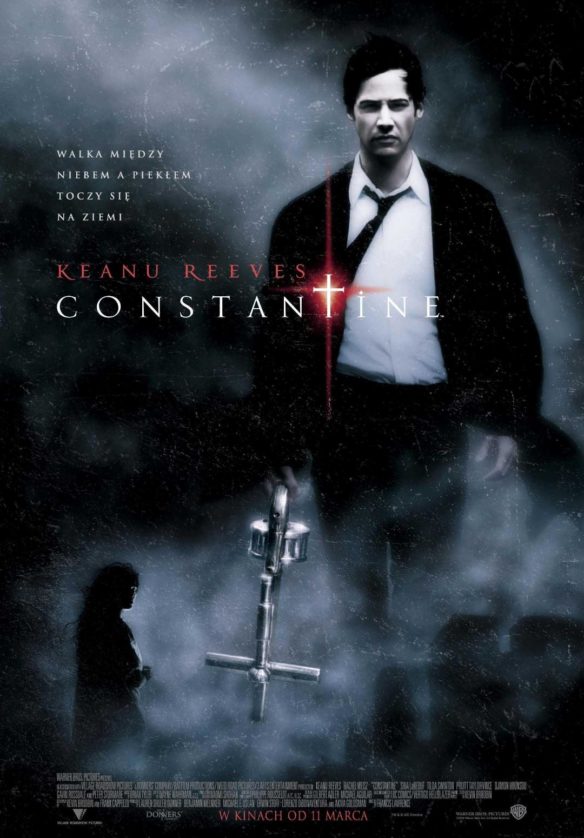
(6) TODAY’S BIRTHDAYS.
[Compiled by Cat Eldridge and John Hertz.]
- Born February 18, 1894 – Marjorie Hope Nicolson, Ph.D. First woman to receive Yale’s Porter Prize (for her dissertation), Cross Medal (as a distinguished alumna). First woman President of Phi Beta Kappa. Crawshay Prize (for Newton Demands the Muse). Voyages to the Moon reviewed by Willy Ley. Pilgrim Award. Festschrift in her memory, Zephyr & Boreas (works of Le Guin). More here. (Died 1981) [JH]
- Born February 18, 1904 – Rafael DeSoto. A score of covers, a dozen interiors for us; also Westerns, thrillers, adventure. See R. Lesser ed., Pulp Art; D. Saunders, The Art of Rafael DeSoto. Here is the Feb 39 Eerie Mysteries. Here is the Apr 43 Argosy. Here is the Nov 50 Fantastic Novels. Yes, descended from Hernando de Soto. This site says it will be available again soon. (Died 1992) [JH]
- Born February 18, 1908 — Angelo Rossitto. A dwarf actor and voice artist with his first genre role being in 1929’s The Mysterious Island as an uncredited Underwater Creature. His last major role was as The Master in Mad Max Beyond Thunderdome. He showed up in Galaxina, The Incredible Hulk, Jason of Star Command, Bakshi’s Lord of The Rings, Adult Fairytales, Clones, Dracula v. Frankenstein and a lot more. (Died 1991.) (CE)
- Born February 18, 1919 — Jack Palance. His first SF film is H. G. Wells’ The Shape of Things to Come which bears little resemblance to that novel. (He plays Omus.) Next up he’s Voltan in Hawk the Slayer followed by being Xenos in two Gor films. (Oh, the horror!) He played Carl Grissom in Burton’s Batman, and Travis in Solar Crisis along with being Mercy in Cyborg 2. ABC in the Sixties did The Strange Case of Dr. Jekyll and Mr. Hyde in which he played the lead dual roles, and He had a nice turn as Louis Strago in The Man from U.N.C.L.E. which is worth seeing. (Died 2006.) (CE)
- Born February 18, 1929 — Len Deighton, 92. Author of possibly the most brilliant alternative novels in which Germany won the Second World War, SS-GB. Itdeals with the occupation of Britain. A BBC One series based off the novel was broadcast several years back.(CE)
- Born February 18, 1930 — Gahan Wilson. Author, cartoonist and illustrator known for his cartoons depicting horror-fantasy situations. Though the world at large might know him for his Playboy illustrations which are gathered in a superb two volume collection, I’m going to single him out for his brilliant and possibly insane work with Zelazny on A Night in the Lonesome October which is their delightful take on All Hallows’ Eve. (Died 2019.) (CE)
- Born February 18, 1931 – Toni Morrison. A score of novels – Beloved (Pulitzer Prize) and God Help the Child are ours – poetry, two plays (one about Desdemona), libretto for Margaret Garner, nonfiction. Jefferson Lecture. PEN/Bellow Award (PEN is Poets, Playwrights, Editors, Essayists, Novelists). Medal of Freedom. Nobel Prize. Oprah Winfrey: “I say with certainty there would have been no Oprah’s Book Club if this woman had not chosen to share her love of words with the world.” Today is TM’s 90th birth-anniversary; see this from the Toni Morrison Society. (Died 2019) [JH]
- Born February 18, 1933 – Ray Capella. A score of short stories for us; twoscore covers, five dozen interiors. Here is Star Quest 4. Here is the Oct 75 Amra. Here is the Nov 81 Fantasy Newsletter. Here is the Apr 01 Alien Worlds. Here is an illustration for John Carter of Mars. (Died 2010) [JH]
- Born February 18, 1936 – Jean Auel, age 85. The Clan of the Cave Bear, five more; 45 million copies sold. Studied how to make an ice cave, build fire, tan leather, knap stones, with Jim Riggs. “The Real Fahrenheit 451” in Omni (with Bradbury, Clarke, Ellison). Officer of the Order of Arts and Letters (France). [JH]
- Born February 18, 1943 – Jill Bauman, age 78. One short story, a score of poems, a hundred thirty covers, ninety interiors for us; many others. An appreciation in Wrzos’ Hannes Bok. Here is Melancholy Elephants. Here is the Apr 89 F&SF. Here is the Aug 92 Amazing. Here is Thumbprints. Guest Artist at the 1994 World Fantasy Convention, Philcon 1999, Chattacon XXVI. Website. [JH]
- Born February 18, 1968 — Molly Ringwald, 53. One of her was first acting roles was Nikki in Spacehunter: Adventures in the Forbidden Zone. She’ll later have the lead role of Frannie Goldsmith in Stephen King’ The Stand series. And does the Riverdale series count at least as genre adjacent? If so, she’s got the recurring role of Mary Andrews there. (CE)
- Born February 18, 1979 – Shannon Dittemore, age 42. Four novels. Blogs for Go Teen Writers. Website says “Coffee Fangirl”. Has read The Importance of Being Earnest, Great Expectations, The Screwtape Letters, Les Misèrables, two by Shakespeare, a Complete Stories & Poems of Poe, Peter Pan, The Adventures of Huckleberry Finn, and four by Jane Austen including Pride & Prejudice in the German translation by Karin von Schwab (1892-1940; alas, Stolz & Vorurteil doesn’t alliterate). [JH]
(7) COMICS SECTION.
- Off the Mark peers over a vampire’s shoulder as he gets shocking news about his online meal order.
- Randall Munroe got a hold of Perseverance’s schedule.
(8) OVERCOMING. [Item by Mike Kennedy.] Entrepreneur interviews physicist & author Dr. Chanda Prescod-Weinstein about her new book, The Disordered Cosmos: A Journey into Dark Matter, Spacetime, and Dreams Deferred and about sexism and racism in science. They also ask her about her interest in science fiction and about speaking at conventions, even if their fact checkers did allow the proofreaders to get away with calling them “Khans.” (Khen Moore would have been so proud.) “This Theoretical Physicist Boldly Goes Where Few Black Women Have Gone Before” at Entrepreneur.
… Professor Prescod-Weinstein, an important theme running through your book is the sexism and racism inherent in science. Crucially, you take time to namecheck those who — like you — did make it through, such as Dr. Willie Hobbs Moore, Dr. Edward A. Bouchet, Dr. Elmer Imes, Professor Arlie Oswald Petters, Dr. Shirley Ann Jackson and Dr. Marcelle Soares-Santos. It is only through seeing people like oneself that one can imagine being up there too, right?
Yes, that’s valuable when you have the opportunity. But I also know that sometimes we don’t get examples like us. As far as I know, none of those people are queer, for example. It’s important then to be the person who is like yourself. I know that sounds silly, but I encourage students to get people to take pictures of themselves doing physics, so that they can see that they are indeed what a physicist looks like….

(9) OCTOTHORPE. The latest episode of Octothorpe is now available! John Coxon has cats, Alison Scott has a milkman, and Liz Batty has a gecko. They plug Picocon, discuss Boskone and Eastercon, and talk more about their Hugo reading/watching/experiencing. “Ep. 25: Some of the Rocks Are Going to Be More Interesting Than Others”.
(10) JEOPARDY! Andrew Porter forwarded his favorite wrong answers from tonight’s episode of Jeopardy!
Category: Types of Narrative Literature
Answer: You can bet “The Lottery” is a good example of this genre of brief narratives, usually under 10,000 words.
Wrong question: What is a novella?
Right question: What is a short story?
*
Category: All Fairs
Answer: A 1939 New York World’s Fair diorama predicting the look of the city in 1960 was called this, later a long-running animated TV series.
Wrong question: What is The Jetsons?
Right question: What is Futurama?
*
Category: Pulitzer Prizes
Answer: Bruce Catton took the 1954 history prize for his book titled “A Stillness at” this fateful place.
Dumb question: What is the OK Corral?
No one got, What is Appomattox?
(11) IT HAD TO BE SNAKES. Leonard Maltin’s Movie Crazy makes “A Mel Blanc Discovery”.
Sometimes a gem can be hiding in plain sight—or within hearing distance. A few weeks ago I turned on Turner Classic Movies (my go-to channel) and watched part of Alexander Korda’s 1942 production The Jungle Book, starring Sabu. I hadn’t seen it in a while and it’s very entertaining. But when Mowgli encountered the giant snake Kaa, I listened carefully to the voice and realized it belonged to Mel Blanc. It had never occurred to me before; he’s speaking in a very low register so it isn’t immediately apparent. Then I thought of him performing his parody of a popular radio commercial in a Warner Bros. cartoon, saying, “Beee-Ohhh” and I was certain….
[Thanks to Michael Toman, John Hertz, Andrew Porter, JJ, John King Tarpinian, Martin Morse Wooster, Cat Eldridge, and Mike Kennedy for some of these stories. Title credit goes to File 770 contributing editor of the day Paul Weimer.]



